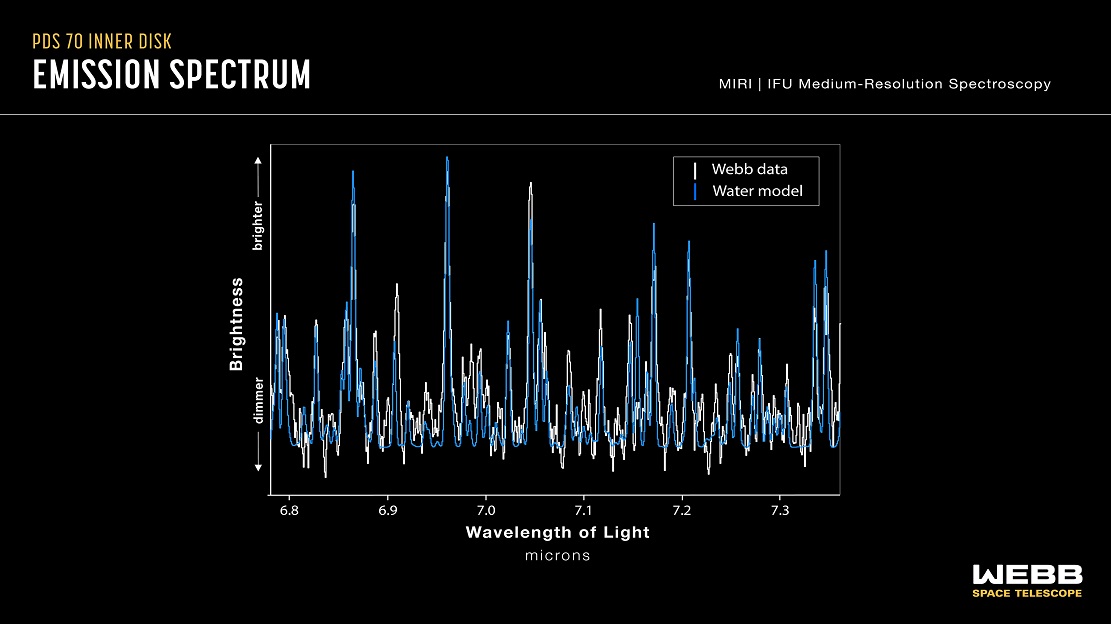James Webb has discovered water in a protoplanetary disc in a potentially habitable zone near our planet for the first time in history

Recently we wrote that scientists for the first time saw two planets in the same orbit in the star system PDS 70. Now here also James Webb Space Telescope for the first time in history discovered water in the protoplanetary disc, which is in a potentially habitable zone.
Here's What We Know
Scientists from different countries are actively searching for water outside our planet and solar system, because it is water is a prerequisite for the origin of biological life. And it must be in liquid form.
In the potentially habitable zone of the system PDS 70 scientists have previously been able to detect several exoplanets. The star belongs to stars of spectral class K. According to the researchers, it is cooler than the Sun, and the age is estimated at 5.7 million years.
Protoplanetary disc is divided into two parts, the distance between which reaches 8 billion km. In the future, planets will form in it. Those planets, which will be located closer to the host star, will be in the habitable zone. In addition, information obtained by the James Webb telescope indicates that they will turn out to be Earth-type planets.

The PDS 70 system is 370 light years away. Water vapour was detected at a distance of 160 million kilometres from the star. By comparison, the distance between the Earth and the Sun is 150 million kilometres.
Current scientific models suggest that at such a late stage in the protoplanetary disc's existence, ultraviolet radiation should have destroyed the H2Omolecules. Scientists will continue to observe the system to solve this mystery. The researchers now suggest that water could have entered the protoplanetary disc from the outside in the form of ice, after which it turned into vapour. The second hypothesis is that water could have formed as a result of the reaction of hydrogen with oxygen.
Source: NASA